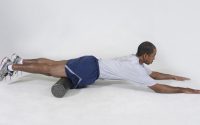Physical inactivity promotes knee osteoarthritis development in guinea pigs
Knee osteoarthritis (OA) is a degenerative disease that becomes more prevalent in recent decades. Age, sex, genes, obesity are known to influence knee OA susceptibility. There is also evidence that physical inactivity that may induce OA prevalence.
Physical activity for attaining and maintaining optimal knee tissue structure and strength is well documented, particularly by experiments with animal models3. For example,
Studies have shown that prolonged periods of limb immobilization can lead to thinner articular cartilage with lower aggrecan content, as well as diminished cartilage stiffness. In contrast, daily exercise has been demonstrated to augment the development of knee cartilage architecture and mechanical properties.
Physical activity can strengthen tansarticular muscles, which stabilize and protect joints, but immobility can reduce their size, causing weaker and more unstable joints. However, these are hypotheses that have not been tested. Thus, a study investigated whether and how a sedentary lifestyle contributes to knee OA incidence and severity.
The authors designed an experiment using Hartley guinea pigs. A group of animals (n = 18) were housed for 22 weeks in small cages to restrict their mobility to simulate inactivity. Another group of animals (n = 17) received daily treadmill exercise to simulate moderate physical activity.
After 30 weeks of experiment, the study found that the prevalence of knee OA was similar between sedentary and physically active animals. Still, the severity of the disease (cartilage lesion depth) was substantially greater in the sedentary group.
The more severe knee OA degeneration of sedentary animals was potentially attributable to two factors. First, sedentary animals developed cartilage with lower aggrecan quantity. It indicated that physical inactivity caused the growth of functionally deficient joint tissues. Second, inactive animals accumulated significantly more body weight and visceral adipose tissue, suggesting that physical inactivity might have exacerbated knee OA degeneration by promoting obesity.
However, the two groups did not differ much in cartilage thickness, collagen quantity, or stiffness, nor in terms of muscle weight, subcutaneous adiposity, or gut microbial community composition.
The authors concluded that a sedentary lifestyle promotes knee OA development, particularly by enhancing disease severity rather than the risk of onset. This potentially occurs through multiple pathways, including engendering growth of functionally deficient joint tissues and accumulating excess body weight and adiposity.
Wallace, I. J., Bendele, A. M., Riew, G., Frank, E. H., Hung, H. H., Holowka, N. B., … & Lieberman, D. E. (2019). Physical inactivity and knee osteoarthritis in guinea pigs. Osteoarthritis and cartilage, 27(11), 1721-1728.

